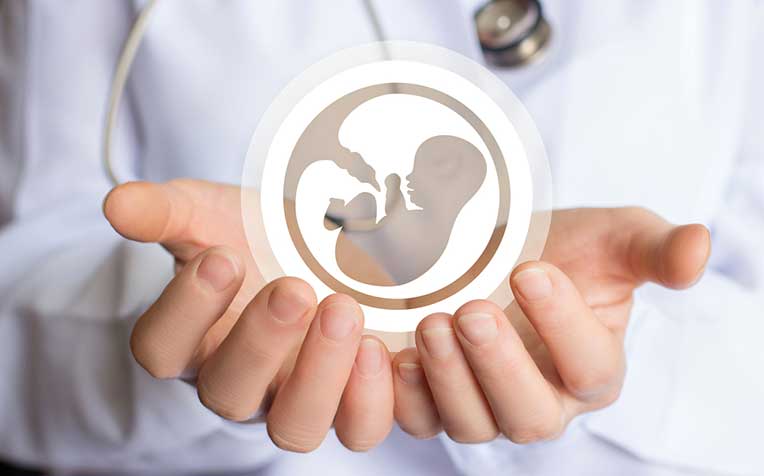
IVF (In Vitro Fertilisation) egg retrieval procedure requires sedatives to help ease discomfort, but a study by Singapore General Hospital proves that acupunture could fulfill this role.
To ease the pain and discomfort felt during an IVF (in vitro fertilisation) egg retrieval procedure at Singapore General Hospital (SGH), sedation is normally given.
But sedative drugs, while generally safe, aren’t for everyone. They can cause allergic reactions, and even complications. Some women also suffer nausea, giddiness, extreme sleepiness and other effects from the sedative drugs after the procedure.
Acupuncture: Providing pain relief for IVF (in vtro fertilisation)
Seeking a viable alternative for women, especially those who might have problems with sedative drugs, an SGH team undertook a study to look at whether acupuncture might do the work as well. Acupuncture, a key part of traditional Chinese medicine (TCM), doesn’t involve drugs – just needles which are inserted at various parts of the body to stimulate the acupoints and supposedly alleviate pain.

Above: When using electro-acupuncture to help relieve pain during IVF retrieval, 12 acupuncture needles are inserted at specific points – four at the lower abdomen, another four at the lower back and two on each hand – and connected to a device that generates continuous electric pulses.
“The idea with this study was to prove that acupuncture does work (as a form of painkiller), and to hopefully make it a service that can be offered to women seeking IVF (at CARE or the Centre for Assisted Reproduction),” said Associate Professor Yu Su Ling, Senior Consultant, Obstetrics and Gynaecology, and Director, CARE, SGH, a member of the SingHealth group.
“I’m always worried about the effects of sedation on some patients,” she said, noting that the amount of sedative drugs may have to be increased markedly for overweight or obese women.
The study aimed to recruit 60 participants, half of whom were randomly chosen to be sedated and the other half given electro-acupuncture, to relieve pain. Like for every procedure, the women were tested for suitability for both sedation and acupuncture.
Early indications – 16 under conscious sedation and 12 who received electroacupuncture – suggested that “the pain relief effects from sedation and acupuncture were almost the same”, said Prof Yu. Nurses observed the patients during the procedure for signs of discomfort and asked them after to determine if they felt pain and its intensity.
While the effects were similar, “the acupuncture group asked for less top-up – additional help to relieve pain during the procedure”, said Prof Yu. Just 8 per cent of the women who received electroacupuncture asked for more pain relief during the procedure compared to 44 per cent from the conscious sedation group, she added.
One surprising – and notable – finding was that more women in the acupuncture group became pregnant (83 per cent) compared to the sedation group (40 per cent). But the study’s small sample size does not allow for acupuncture to be conclusively pinned down as the cause for the happy outcome.
According to Ms Cui Shu Li, Senior Principal Acupuncturist, SGH , the acupoints targeted for stimulation not only provide pain relief, but also “nourish kidney function,” which in TCM means enhancing fertility.
Acupuncture vs sedatives
Because sedation caused after-effects, patients in that group needed at least an hour to recover under the nurses’ careful monitoring. The other group didn’t need monitoring because they had not been given any drugs and so, had no side effects. “We found that the acupuncture patients didn’t need post-operative recovery at all. They could leave the hospital immediately after. But patients under sedation might still be sleeping when their husbands returned for them later,” said Ms Yu Chun Yan, SGH Nurse Clinician, CARE.
“This post-procedure recovery really saves costs and time for the nurses. Beds can be freed up for other patients, and nurses can also attend to other patients,” she added.
While acupuncture is regularly used in surgical procedures in China, the technique is increasingly being used in many places in the West, notably Denmark, as a way of relieving pain during surgical procedures, said Prof Yu. It is even being used in place of anaesthesia for hysterectomy, or the removal of the womb, in some countries, sometimes performed by anaesthetists trained in the technique. Acupuncture is finding favour among patients who prefer to use fewer or no drugs if possible, even to help with nausea and vomiting during pregnancy.
About IVF (in vitro fertilisation) egg retrieval procedure
An in vitro fertilisation (IVF) egg or oocyte retrieval is a minor procedure that takes 10 to 15 minutes to do.
The woman would have been given daily injections for about a fortnight before to stimulate her eggs to mature. Before the procedure, she is sedated or put under anaesthesia to help ease the discomfort or pain that she may feel. In Singapore, sedation (which is a mild form of anaesthesia) can be given by a doctor, but anaesthesia is only performed by a trained anaesthetist.
Then, an ultrasound probe with a fine needle is inserted into the vagina, going through the vagina wall and into the ovary, to suck out follicle fluid. The fluid is then examined under a microscope by an embryologist, who collects an average of 10 eggs for an IVF treatment cycle.
There is usually very little bleeding, which in any case is easily stopped by pressure.
Patients given sedation have to rest for at least an hour, and confirm that they have recovered fully before they are discharged. Depending on the quality of the eggs, a fertilised embryo will be transferred back into the woman two to five days later. No sedation is involved at this juncture as there is very little pain or discomfort.
Women between the ages of 25 and 45 can undergo IVF.
Ref: N18
Contributed by


















 Get it on Google Play
Get it on Google Play